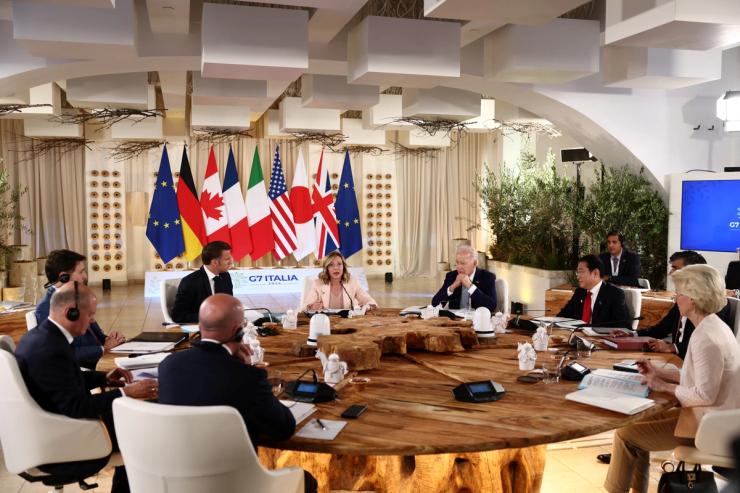The News
Leaders from the Group of Seven nations agreed on Thursday to send $50 billion to Ukraine by the year’s end, Reuters reported.
The deal, the details of which is still being finalized, will use the interest from frozen Russian assets to fund Kyiv in its war effort against Russia. An outline of the deal has been agreed, an official told Reuters.
“I think we will have the major tentpoles of this decided, but some of the specifics left to be worked through by experts on a defined timetable,” White House National Security Adviser Jake Sullivan said.
SIGNALS
Agreement will see each nation contribute funds
Under the plan, each G7 nation will contribute money to Ukraine, with the profits from frozen Russian assets used to repay the loans. The approved deal is a renegotiated version of a Washington-led proposal that dominated news cycles last week and which would have seen the EU backing a loan from the US. The new agreement will see each country taking on a portion of the loan’s risk directly, rather than one region accepting sole ownership over any repayment plans, the Financial Times noted. Officials are confident that the agreement will be finalized before the end of the summit: “At sherpa level, it is agreed and I do not expect any leaders ... to block it,” one official told the FT.
Financing plan faced perilous diplomatic hurdles
A spat between the US and EU nearly derailed the agreement, Politico reported earlier this week. Washington had proposed that the EU take the entirety of the risk of a loan that would fund Ukraine, angering European officials. The EU and the US agree about using immobilized Russian assets to pay back the loan — but have locked horns over who is liable to pay it back in the event that Hungary, which has been friendly to Russia, vetoes sanctions that keep assets frozen. Washington’s proposal, a European diplomat told Politico, amounted to Europe taking on the risk and the interest, while the US used the money for a US-Ukraine fund. “We might be stupid but we’re not that stupid,” one diplomat said, with another adding that “if it was the other way around, they would say we are crazy.”
US issued new sanctions ahead of summit
The Biden administration issued new sanctions against Russia before the G7 summit, targeting more than 300 financial institutions and entities that are profiting from the war. The measures aim to prevent Russia from accessing Chinese-manufactured semiconductor chips and other high-tech equipment that could advance its war effort. The “secondary” sanctions would allow Washington to target any financial institutions that agree to doing business with Moscow, further isolating the Kremlin’s war economy.



